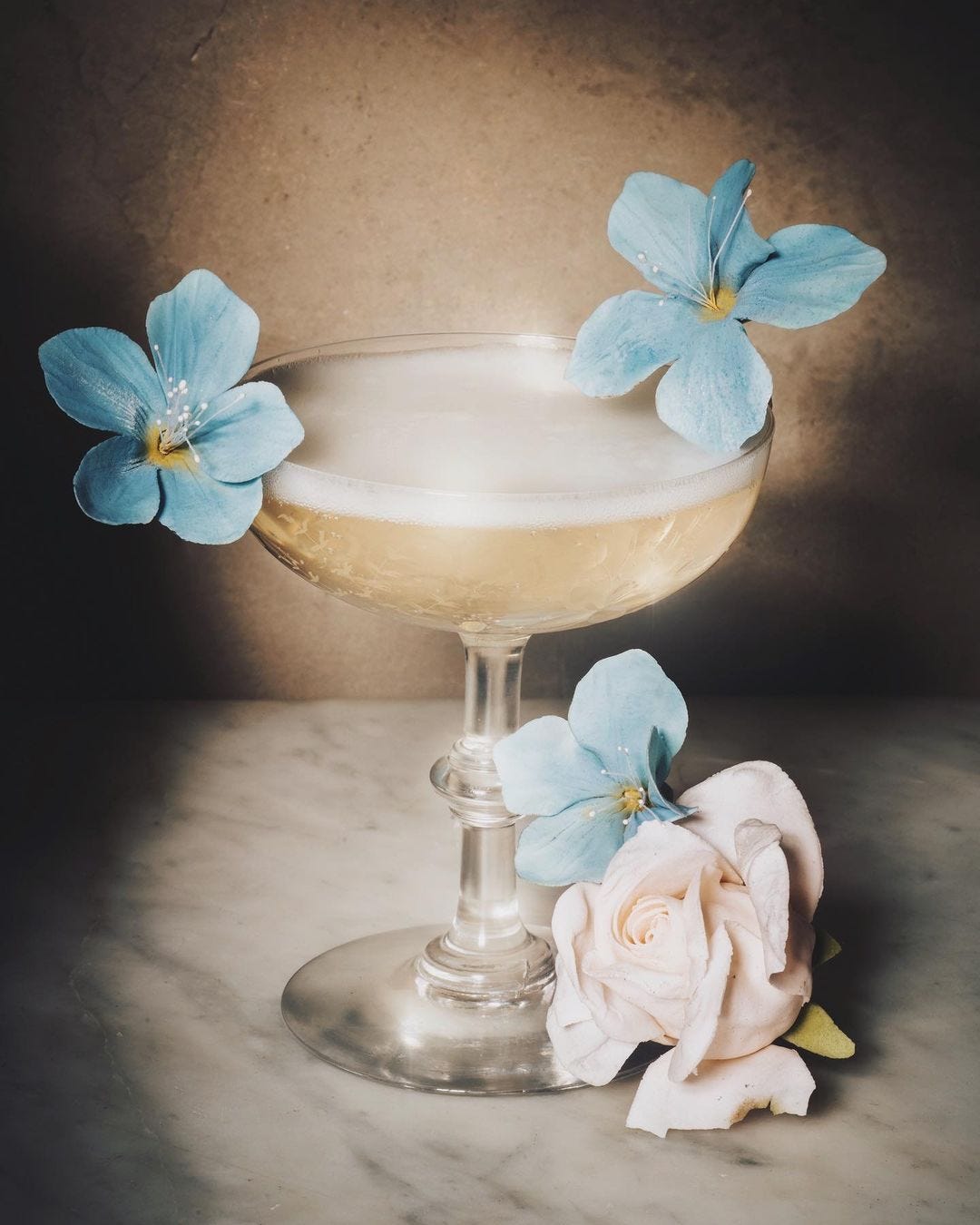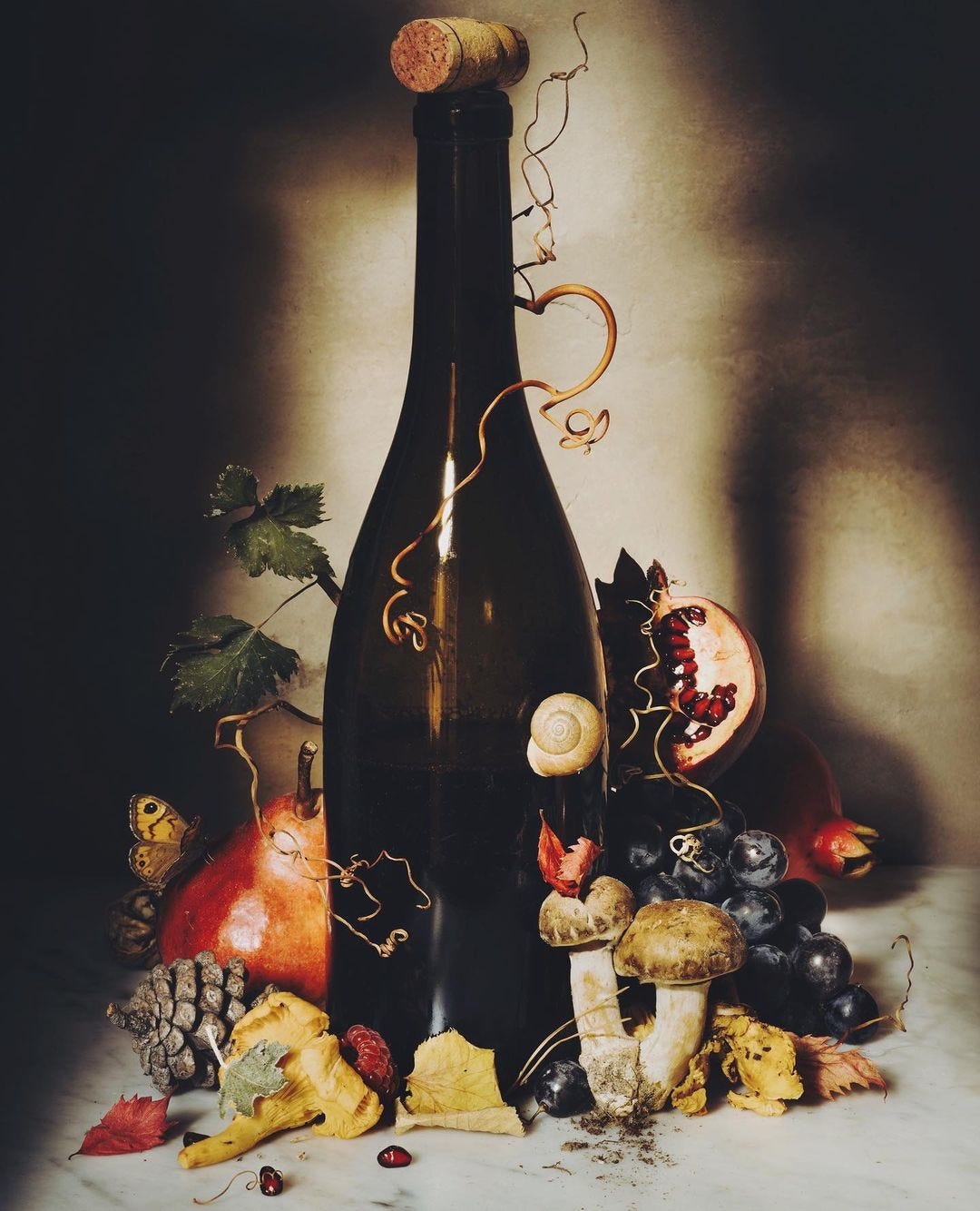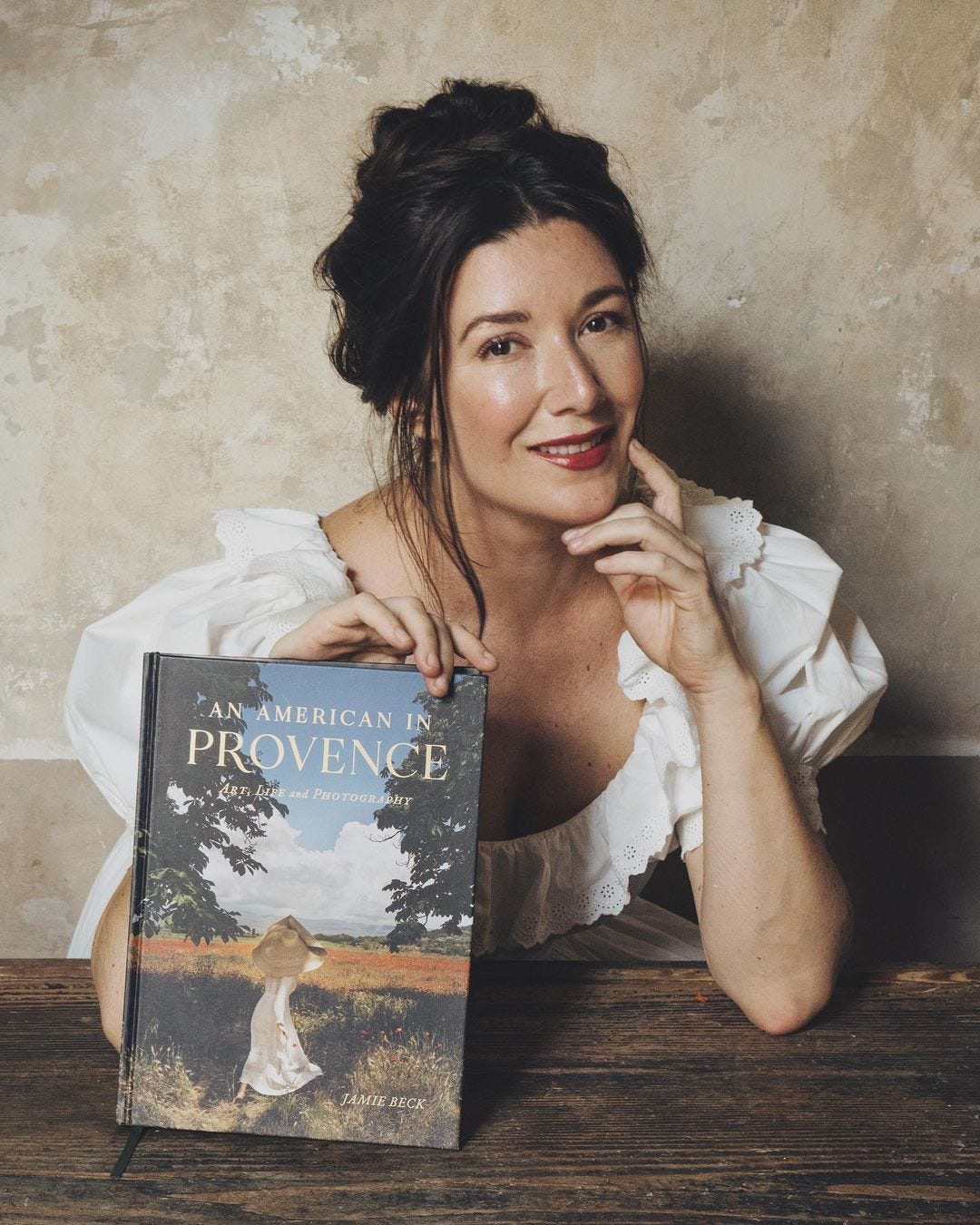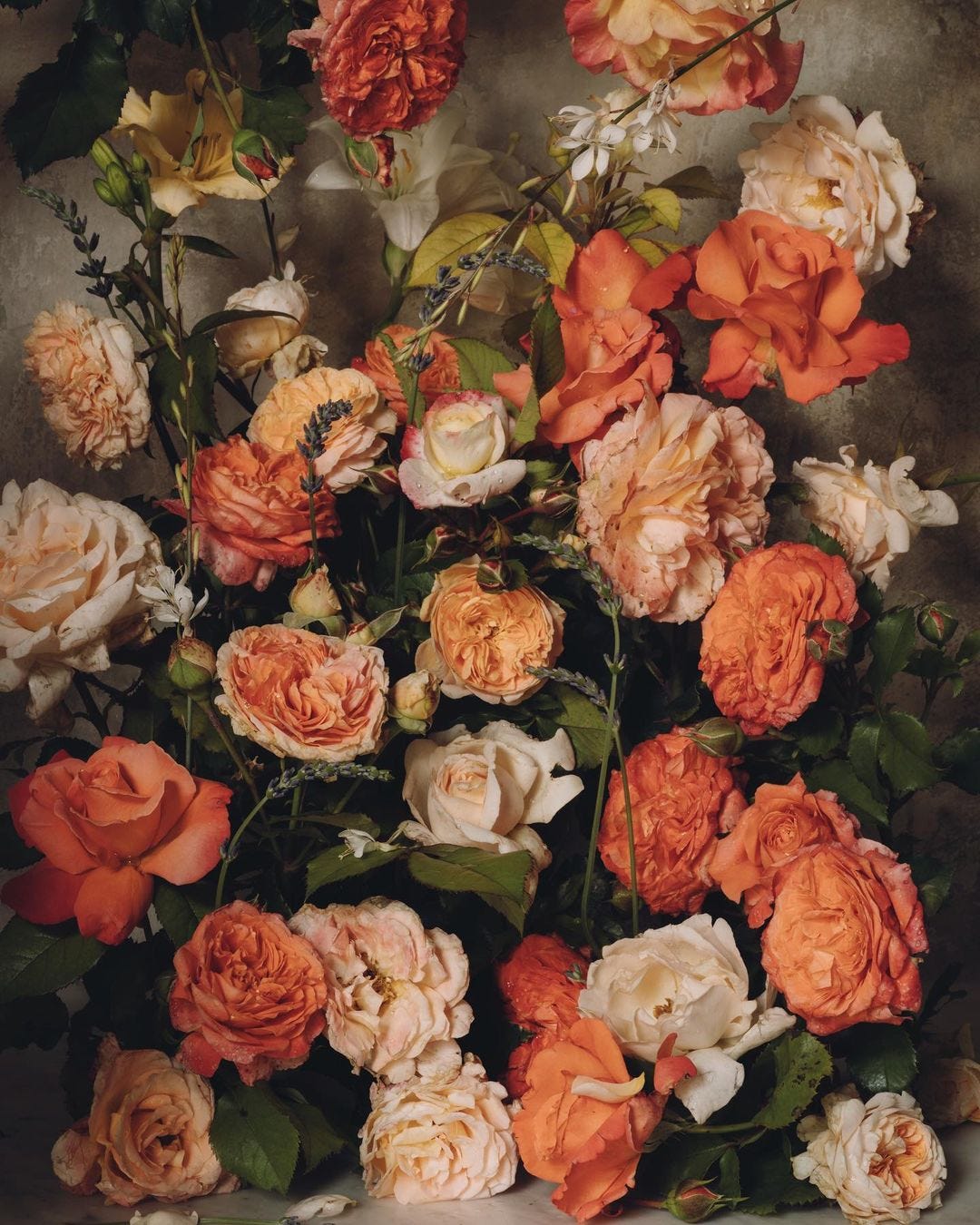in conversation with Jamie Beck
we meet with a photographer Jamie Beck to talk about art, writing her first book, creative constraints, and more
Jamie Beck is an American photographer and author living in Provence. Before changing continents, Jamie owned a commercial studio in Manhattan and worked with luxury brands—Donna Karan, Oscar de la Renta, and Chopard are just some of them. Jamie decided to move to France after experiencing severe turbulence on a flight; she had promised herself that if she landed safely, Provence would become her new home.
I have been following Jamie's work for a few years now—I'm fascinated by her otherworldly still lives, landscapes, and auto portraits. And, of course, the region of Provence, which is like a thread uniting all her recent work. During the pandemic, Jamie devised the Isolation Creation series: one piece of art for each day spent in isolation. Observing her work on this series, even if only via social media, has been a source of immense consolation. I wanted one of these pieces in the apartment, so I picked Day 13. It shows a sparkling glass of champagne adorned with delicate blue petals and a pink rose lying nearby.
Last month, I finally got to see Provence's beauty for myself. Luckily (it was pretty much a pinch-me moment), I also had an opportunity to ask Jamie a few questions. We discussed the philosophy behind her photography, why writing her first book felt a little bit like drowning, and how two mediums enrich one another. We also touched on creative excitement, pursuing work you're passionate about, and how constraints can fuel imagination.
Monika: If someone were to look at your photography for the first time—a still life of ripe fruit, magnificent flowers, and bugs—what would you hope them to feel?
Jamie: I always describe my time and experience in Provence as being reawakened to childlike wonder. As if I am seeing everything anew for the first time, and it’s… magical! That appreciation for the daily life things that are all around us—the peaches at the market, the butterfly perched on a flower, the blue light cascading down a hillside on the way home, that is what I want people to see and feel when they look at my work. How beautiful life, the life we all have access to every day, truly is.
Monika: I recently watched your studio tour. One highlight from that conversation was how you described one of your first photography assignments in Provence—taking photos of cheese for a vendor in the market. You credit that day as changing your creative career. Have any other moments since then conjured a child-like excitement as big as that?
Jamie: That day, photographing the cheeses from the market ignited a creative fire in me. It was instantly like, what else is around me I can photograph?! I began to play with the objects in the room, from the daily market, with what was in my closet, the light as it moved through my living room. There was so much to discover and capture. So many stories of our daily lives I wanted to tell through my lens. I would wake up each day not knowing what that day’s photograph would be, but rather, go about my day living it until that moment of inspiration struck.
As the years went on and my body of work in the South of France grew, my walls expanded. What first began in my little apartment expanded to the market, and then when I got a car, I was able to go into other villages, farms, and landscapes. In August 2020, I was invited to forage and photograph a series of images for the winery Domaine Milan in Saint-Rémy-de-Provence to be used in a series of wine labels. Walking through the vineyard at sunrise so alive with ripened grapes waiting to be picked, wildflowers, bursting roses, chickens and cats and children, it was the same moment for me as when I photographed the cheese. But, instead of using something handed to me, I was out there hunting for it.
Monika: In the same interview, you mentioned that deciding to sell your Provençal photography was a vulnerable moment that opened up a new phase in your career and helped you become an artist. Since you've taken the leap, what advice would you give those who would like to sell their creative work but are still terrified that no one will be interested in it or that no one will understand their vision?
Jamie: First, some of the greatest artists in history whose paintings adorn world-renowned museums and sell for millions of dollars at auction, never sold a single piece in their lifetime. Take Van Gogh and Cézanne; they never knew monetary success, but that’s not why they made their art. You make art for you. Because it feels good to you. It’s healthy for you. You have something to say. If others respond to that or not is not up to you. Always be true to yourself, and you’ll find your own joy in the work, not in the public “success”. There is so much we cannot control, I find it’s better to spend your day doing the work that makes you happy, evolving through that work, than thinking about selling or the work being ‘liked’. I promise you, though, that when you do what you truly love, the money will always follow.
Monika: It is often said that constraints fuel creativity. During the pandemic, with all commercial assignments gone, you started the #IsolationCreation series and created a piece of art daily. During that time, did you feel constraints opened new possibilities, or did you struggle?
Jamie: Absolutely! I thrive within constraints. I truly believe that the less we have, the more creative we can become. #IsolationCreation was a real study of this idea and one that led me to some of my best work because the ideas and application had to develop, not the access or change of scenery. It was incredibly challenging, terrifying some days, but I have never grown more as an artist. For each of the 60 days I created in isolation, I was faced with limitations—limitations of movement, access, subject matter, light, my own abilities, and my own mental will. The series is bound by constraints, defined by them, but it is through limitations that I discovered a world of splendor. As I gazed each morning outside my windowpane, I was forced to be completely open to what that day had to offer and how I was going to capture it through photography.
These photographic works are a testament to a creative truth even Leonardo Da Vinci recognized, "Art lives from constraints and dies from freedom." I chose to turn off all the noise of a world thrown into chaos and use the restrictions placed upon me during a global pandemic as a way to flourish creatively. By embracing these constraints, I was able to clearly focus on the beauty and purity of this moment in time. In the end, nothing can stop the flowers in spring from blooming nor inhibit my curiosity to capture life through a photographic lens. It's all in the way one chooses to see.
Monika: Last year, your first book, An American in Provence: Art, Life and Photography, was published. How did it feel to work with words? How do you think they helped communicate the message behind your pictures?
Jamie: Writing is not something I’m terribly comfortable with because the process for me is so vastly different than when I photograph. When I create a photograph, it is as if I have a perfect dance partner in a camera. We can move through a space or an idea and dance through the light effortlessly together. When I write, however, it feels like being drowned in a river. Fighting for air, grasping at words you can hold on to, not quite sure what’s around the riverbed. When I’m building a photograph, I know where it’s going; I’m building what is in my mind’s eye. When I’m writing…. I’m never quite really sure how I’ll get there.
When they asked me to write my story in this memoir-esque book, I was terrified. But, as an artist, I knew I had to push myself. I had to discover my limits and what I was capable of. What interested me most about using words to illustrate what I was so accustomed to doing through photographs was that it gave me an opportunity to explain what these images mean to me personally and how and why they came to be. It was also a nice opportunity to share my process and explain the steps that brought me to this time and place and this particular body of work.
Monika: How has working on American in Provence enriched your perspective as a photographer?
Jamie: Creating a book is an intense study of braiding visuals to words in a cohesive enough manner that can fully communicate an entire picture of life. This means that photos of our daily life that one might think are insignificant are actually important to the telling of a story. It's all in the details, and creating this book was a reminder to pay attention to those fleeting moments of life around us.
From a technical perspective, having spent months going through archives and editing images I never touched once the shutter was released, I now keep up with my editing and archiving in a way that is finished and cataloged by month and date. Creating the first book was just an unorganized photo dump of chaos I never want to experience again!
Monika: On October 24, your second book, The Flowers of Provence, is coming out. Why did you decide to focus on the theme of flowers?
Jamie: My greatest joy of Provence is the flowers. Not only for their beauty, scent, and decoration but how they are part of the ecosystem. Necessary for making honey, for pollination of fruit trees, and to tell farmers signs of disease before it attacks their crops. Flowers are edible, beautiful, they’re used as dried herbs for cooking, medicine, essential oils, and so much more. I dig deeper into the history and uses of flowers in this region, along with over 200 floral photographs, in my new book, The Flowers of Provence.
Monika: What’s the next thing you’re looking for?
Jamie: After four years of non-stop work from #IsolationCreation projects to the first and second books, I’m looking forward to taking a break, getting back into the studio, and letting my mind wander until that magical moment of inspiration leads me back into the creative flow that is my life.
Monika: Thank you, Jamie, for our conversation. I’m glad I could see the beauty of Provence for myself, and I look forward to reading your new book.
Get a signed copy of The Flowers of Provence from here.







This is a gem: "You make art for you. Because it feels good to you. It’s healthy for you. You have something to say. If others respond to that or not is not up to you. Always be true to yourself, and you’ll find your own joy in the work, not in the public “success”. There is so much we cannot control, I find it’s better to spend your day doing the work that makes you happy, evolving through that work, than thinking about selling or the work being ‘liked’."
What an insightful interview! And her compositions are stunning. 🥀